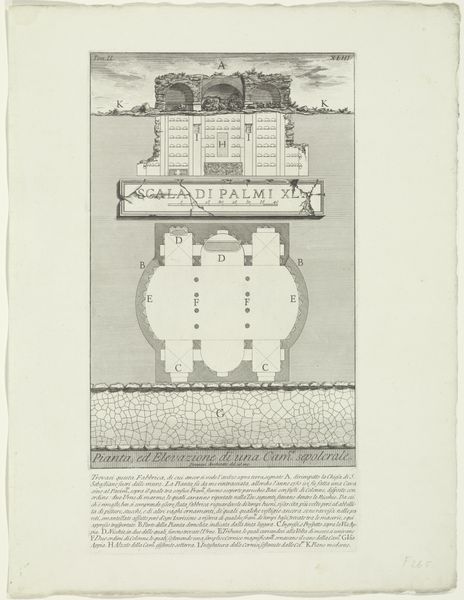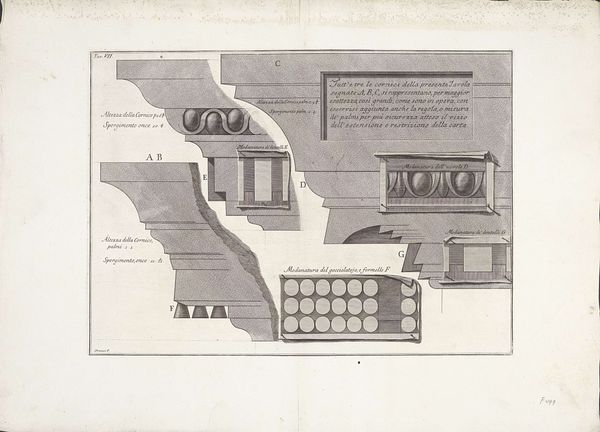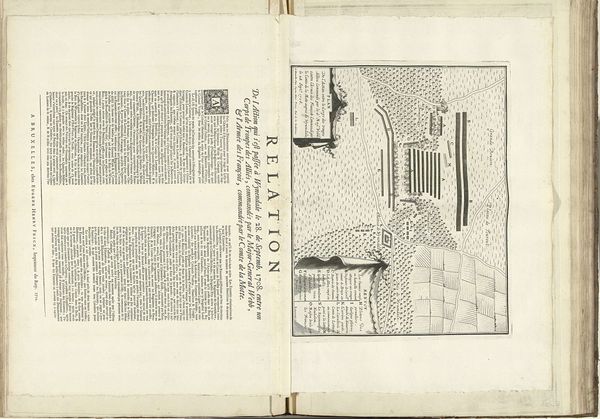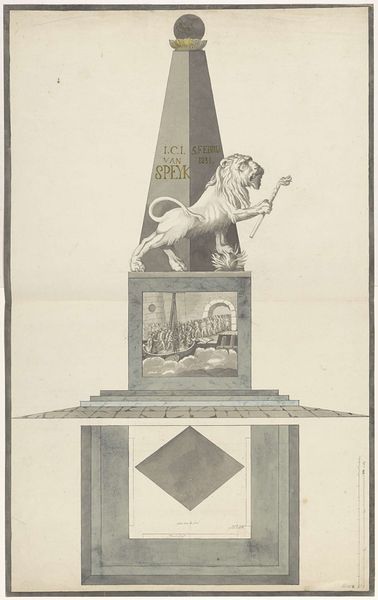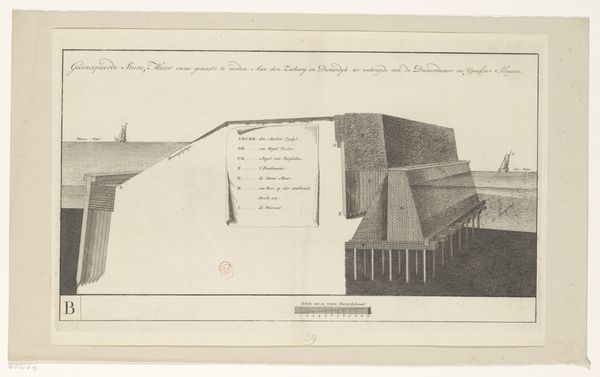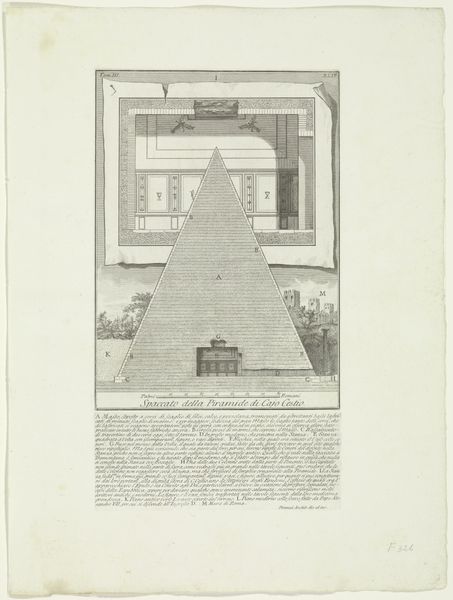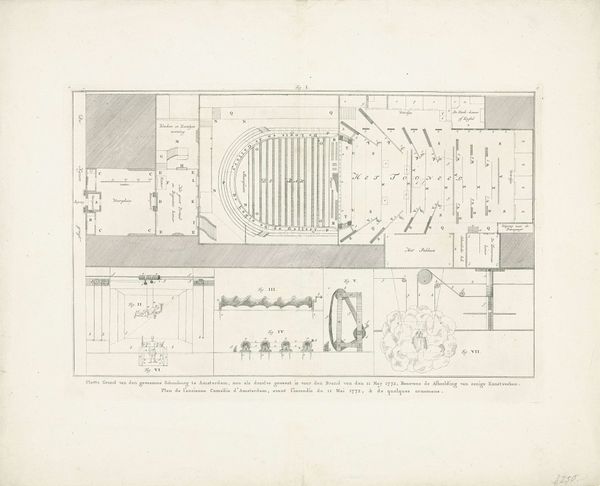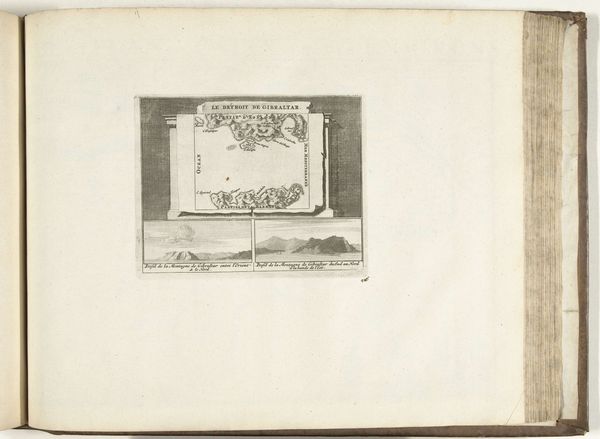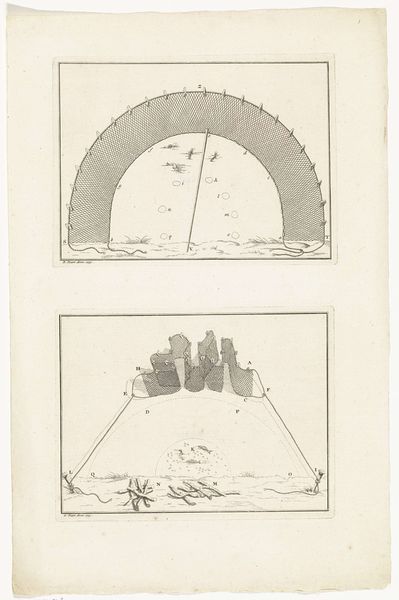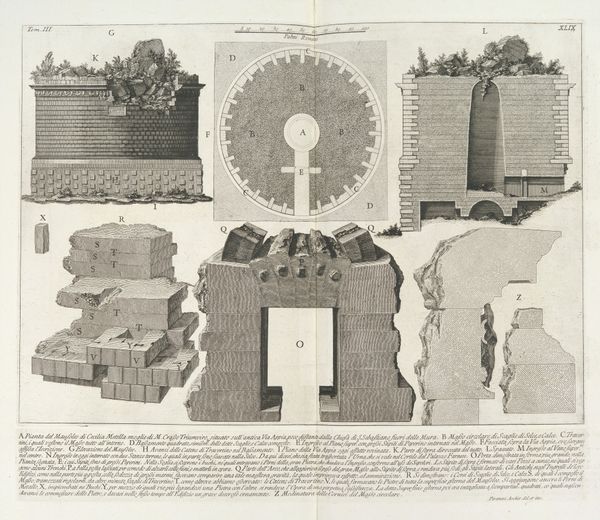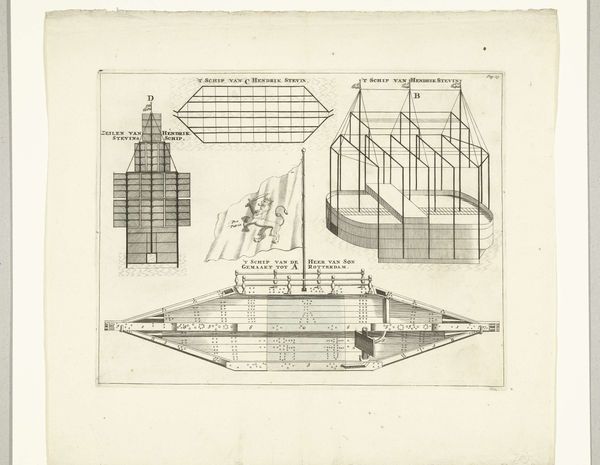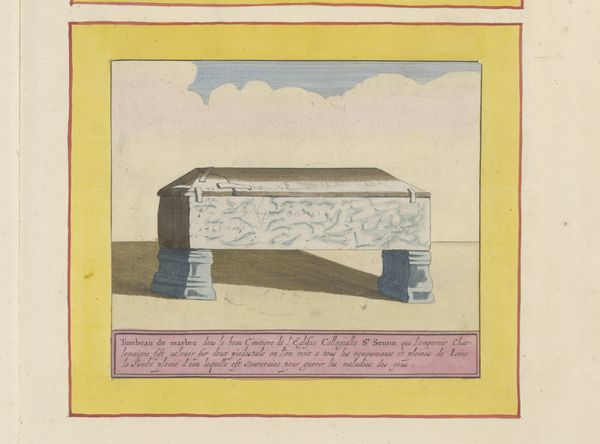
Doorsnede van boog van Engelenbrug te Rome c. 1756 - 1757
0:00
0:00
drawing, print, etching, paper, engraving, architecture
#
drawing
#
baroque
# print
#
etching
#
paper
#
cityscape
#
engraving
#
architecture
Dimensions: height 392 mm, width 473 mm
Copyright: Rijks Museum: Open Domain
Editor: Here we have Giovanni Battista Piranesi’s "Doorsnede van boog van Engelenbrug te Rome," or "Section of the Arch of the Bridge of Angels in Rome," created around 1756-1757. It’s an etching and engraving printed on paper. It strikes me as a really intricate, almost obsessive, rendering of the bridge's structure. What stands out to you about this work? Curator: The precision certainly grabs attention, doesn't it? For me, the image resonates with layers of symbolic weight. Piranesi's Rome is never simply a physical space; it is a stage for historical memory. This print, in its meticulous detail, is more than just an architectural record. It suggests an almost archaeological yearning to unearth the past and preserve it, even as time relentlessly marches forward. Do you see the contrast between the bridge's imposing mass and the delicate lines of the print itself? Editor: Yes, definitely. It’s like he’s trying to capture something monumental in a fragile medium. I wonder if the architectural drawing style was meant to evoke a sense of scientific accuracy for its viewers. Curator: Precisely! He’s appealing to the Enlightenment ideals of reason and observation, yet he’s also dealing with a subject – ancient Rome – laden with myth and cultural significance. Look at the base of the bridge – the layered stones, almost like a ziggurat. Do these foundational shapes connect with other symbols that would inform the audience's expectations? Editor: I suppose they might subconsciously link it to other powerful, ancient structures? Almost a visual shorthand for "history" and "enduring power?" Curator: Exactly! And what do you make of the bridge itself, reaching across the water, connecting one side to another? What emotional or psychological symbolism could that convey to his audience? Editor: Perhaps connection, transition… crossing from one state of being to another? Curator: Yes! Consider its historical and religious importance – linking the city center to the Vatican. The "Bridge of Angels," in that light, becomes a potent symbol. I find that understanding symbolism really enhances the cultural context of a work like this. Editor: Me too. It’s like decoding a secret language. Thanks! Curator: My pleasure. Every line and shadow tells a story, or perhaps, many.
Comments
No comments
Be the first to comment and join the conversation on the ultimate creative platform.
